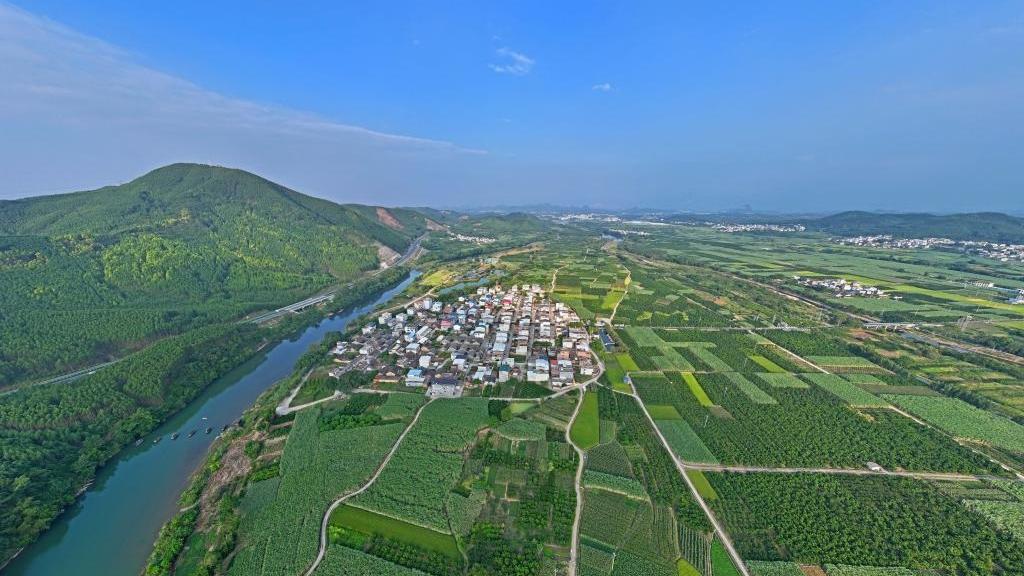Key facilities enable scientific advancement
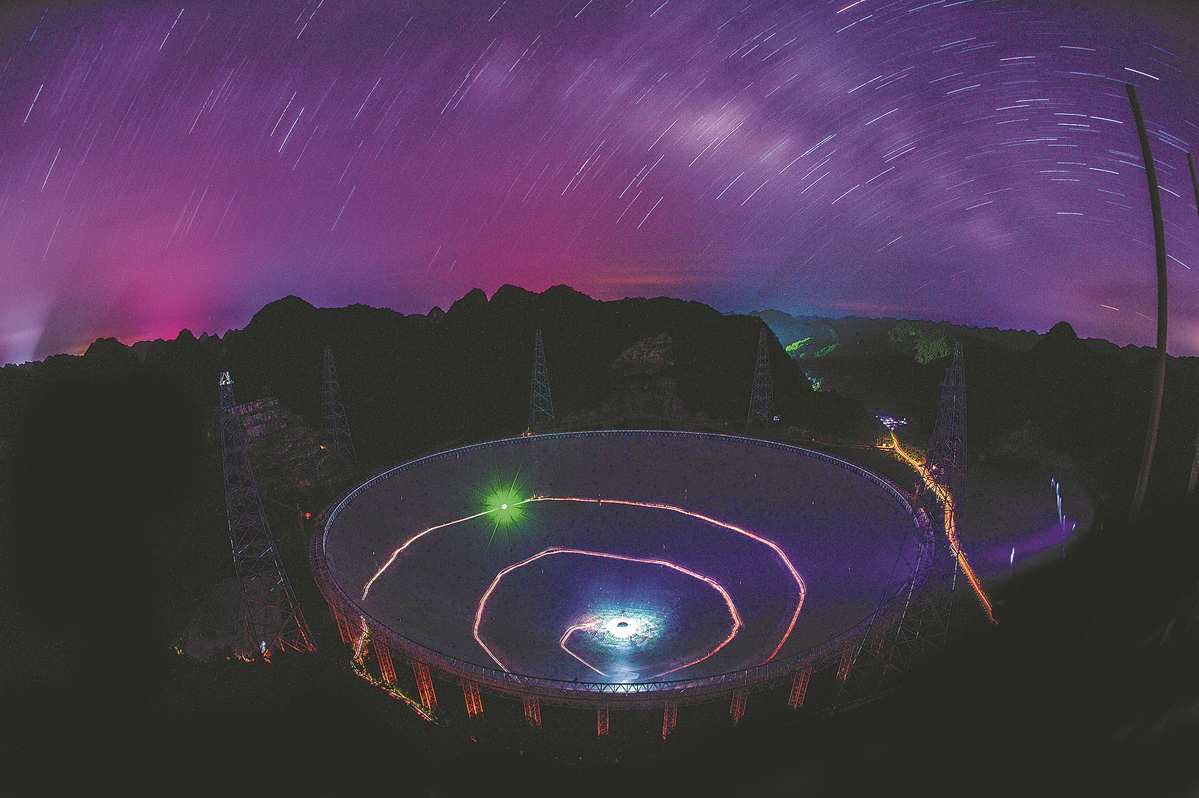
A time-lapse photo of the Five-hundred-meter Aperture Spherical Radio Telescope in Guizhou province. Since being put into operation in 2016, it has helped provide key data in learning about cosmology. (OU DONGQU/XINHUA)
Over the past 75 years, China's development of key scientific facilities has advanced in leaps and bounds, most notably in the past several decades as the Chinese economy and technological capacity have accelerated at great speed.
A key component of these facilities has been technologies that have enabled Chinese scientists to look deeper and deeper into the unknown.
Light allows us to see objects, while X-rays help us see the essence of things. X-rays with higher brightness can allow us to "see" the microstructures inside materials more clearly. Therefore, obtaining X-ray light sources with higher brightness is a goal tirelessly pursued by scientists.
"The synchrotron radiation light source that produces high-brightness X-rays is like a super microscope that helps researchers see what is happening inside materials at the molecular and atomic levels," said Tai Renzhong, vice-president of the Shanghai Advanced Research Institute of the Chinese Academy of Sciences.
The brightness of X-rays from synchrotron radiation can be billions of times higher than ordinary X-rays. By using such light for experiments, scientists have been able to better understand approximately 70 percent of the known biological macromolecular structures in the world such as proteins, DNA, and viruses.
"As we advance certain industries, including super fibers, advanced engineering materials, energy catalysis, new energy batteries, and other key technologies, understanding what is happening internally is crucial for solving bottlenecks," said Tai, who is also deputy manager of the Shanghai Synchrotron Radiation Facility, explaining why these large synchrotron facilities are widely recognized worldwide.
As the first third-generation synchrotron radiation light source on the Chinese mainland, the Shanghai Synchrotron Radiation Facility has the highest number of users and output of any large scientific facility in China. In its 15 years of operation, it has been used by more than 60,000 researchers from nearly 700 research institutions and companies, supporting over 20,000 projects.
A key project being undertaken is the X-ray brain imaging research being conducted at the Shanghai Synchrotron Radiation Facility. It is expected to complete the first mesoscale neural connectivity map of the human brain in about three years, providing a breakthrough research tool for neuroscience.
The Shanghai Synchrotron Radiation Facility has 34 beamlines and 46 experimental stations open to users, catering to cutting-edge basic research in multidisciplinary fields such as life sciences, materials science and medicine, according to the Shanghai Advanced Research Institute.
It has become a significant technological infrastructure with the highest number of beamlines, the widest coverage of energy range, and the most diverse experimental methods among third-generation medium-energy synchrotron radiation facilities worldwide, the institute said.
Gao Fu, a renowned Chinese immunologist and microbiologist who is an academician of the Chinese Academy of Sciences has nothing but praise for the facility.
"The Shanghai Synchrotron Radiation Facility has played a significant role in my scientific research, the transformation of scientific research results into technology, and the conversion of technology into products. From my research on emerging infectious diseases and immunology, it has played a very important role in China's scientific development in the 21st century," he said.
In June 1962, Derek John de Solla Price, a scientist from the United States, proposed the concept of "big science". The characteristics of big science include grand goals, massive investments, and interdisciplinary collaboration. Big scientific facilities are essential infrastructure for contemporary scientific development, reflecting a country's or region's research capabilities.
China's construction of large scientific facilities can be traced back to the late 1970s with the building of the Beijing Electron-Positron Collider.
To advance high-energy physics, in 1972, 18 scientists including Zhang Wenyu and Zhu Hongyuan wrote a letter to then-premier Zhou Enlai.
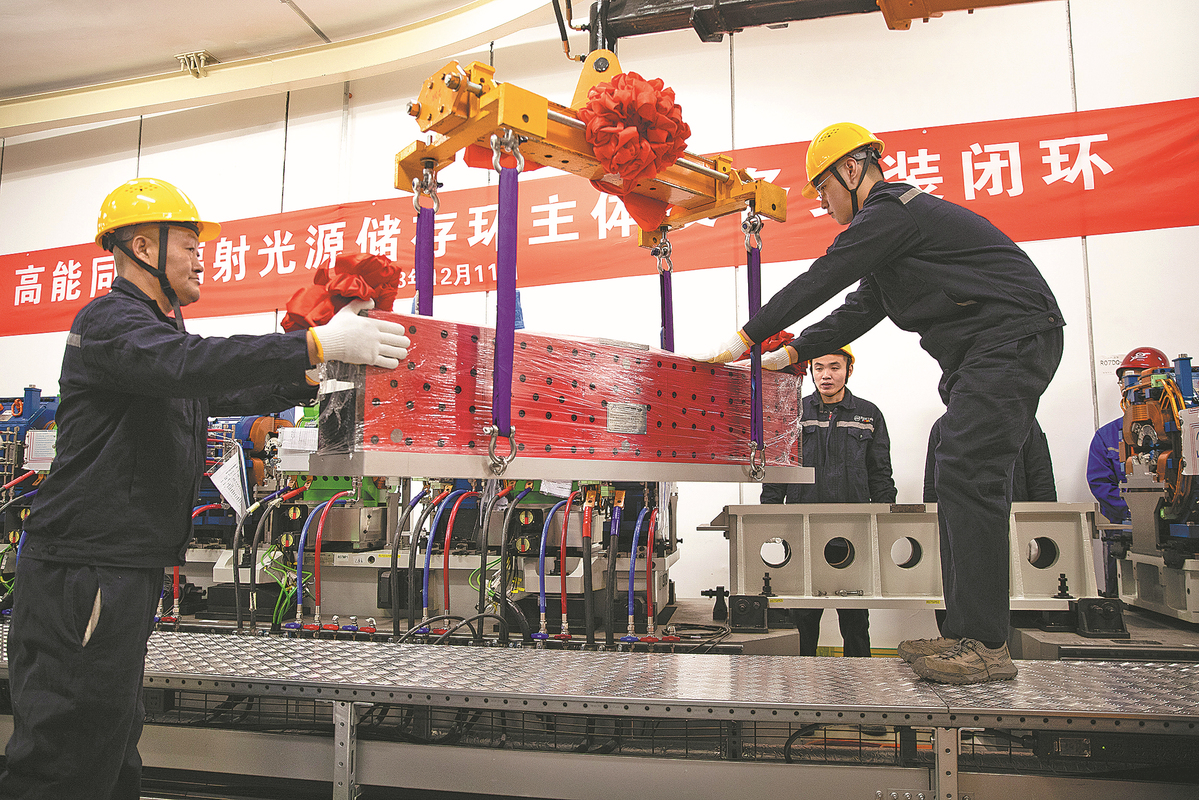
Workers install the last electromagnet of the High Energy Photon Source in Beijing in December. (JIN LIWANG/XINHUA)
At that time, high-energy physics experiments in China were almost nonexistent, and high-energy physics theoretical research relied entirely on foreign experimental data, according to records from the CAS.
Premier Zhou Enlai said: "This matter cannot be delayed any longer. The academy of sciences must focus on basic science and theoretical research, while also integrating theoretical research with scientific experiments."
In March 1981, scientists from the CAS met with physicists Tsung-Dao Lee and Wolfgang K. H. Panofsky, the director of the Stanford Linear Accelerator Center in the US, to discuss the construction of the Beijing Electron-Positron Collider, which was unanimously considered the best development plan at the time.
After years of exploration, the collider was completed in 1988. Deng Xiaoping, China's late leader, at the inauguration ceremony, said, "Whether in the past, present, or future, China must develop its own high technology and occupy a place in the world of high technology."
Wang Yifang, the current director of the Institute of High Energy Physics, reflected: "Looking back, constructing the Beijing Electron-Positron Collider was the best choice at the time. It allowed China's high-energy physics to take a place in the international high-energy physics field, cultivated a team with international standards, and also promoted the construction of other large scientific facilities in the country."
The Beijing Electron-Positron Collider served dual purposes, and based on it, the Beijing Synchrotron Radiation Facility, the first generation synchrotron radiation light source, was built.
Soon after, in 1990, the second-generation synchrotron radiation light source, the Hefei Synchrotron Radiation Source, was built. Subsequently, in 2009, the medium-energy third-generation synchrotron radiation facility, the Shanghai Synchrotron Radiation Facility, was completed.
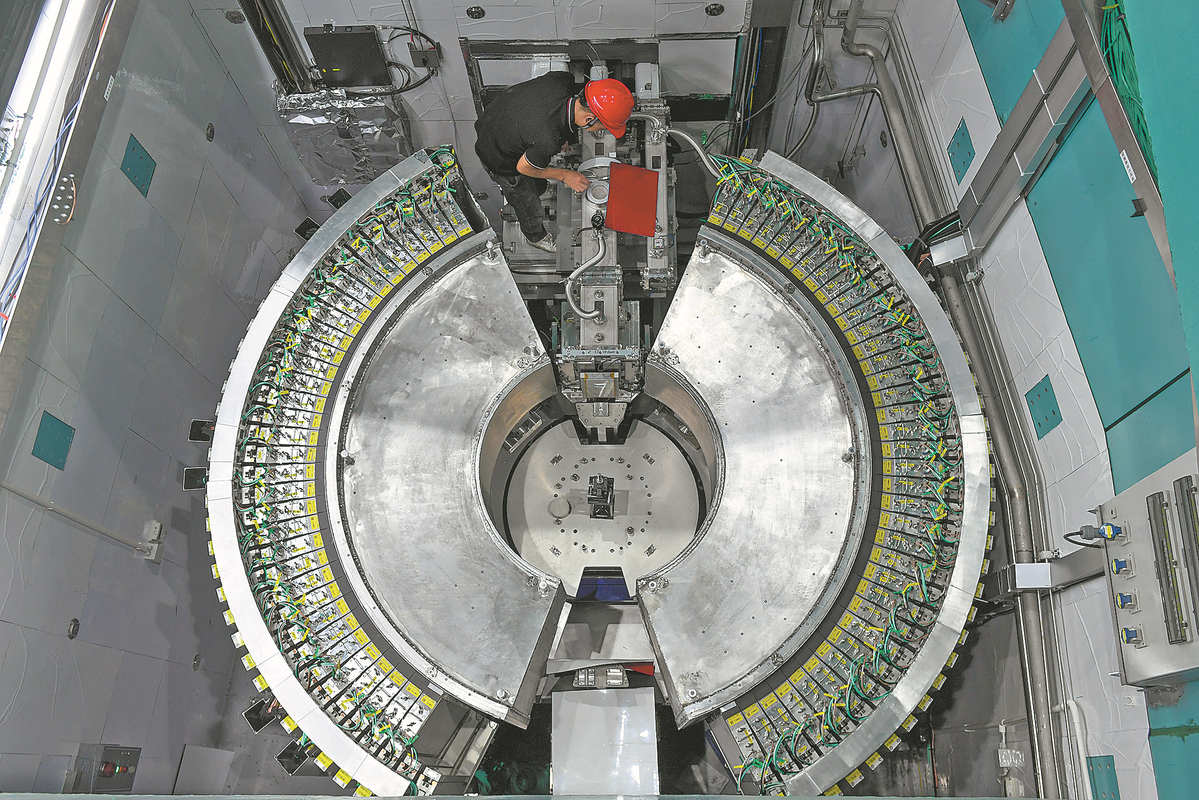
A technician operates a part of the China Spallation Neutron Source in Dongguan, Guangdong province, in July. (MAO SIQIAN/XINHUA)
The fourth-generation synchrotron radiation light source, the High Energy Photon Source, located in Beijing's Huairou Science City, is expected to be fully operational by the end of next year.
Once completed, it will be China's first high-energy light source and one of the brightest fourth-generation synchrotron radiation facilities in the world, emitting light 1 trillion times brighter than the sun, according to the Institute of High Energy Physics, which is part of the CAS.
The CAS currently has over 30 large scientific facilities in operation or under construction, including specialized research facilities for specific scientific and technological goals in certain disciplines, such as the Beijing Electron-Positron Collider and the Heavy Ion Research Facility in Lanzhou.
There are also public experimental facilities serving multidisciplinary basic research, such as the Shanghai Synchrotron Radiation Facility and the Hefei Synchrotron Radiation Source; as well as public technology facilities providing basic data, such as the China Remote Sensing Satellite Ground Station and the BPL and BPM national time service systems.
According to the CAS, large scientific facilities in China play a strategic role in achieving high-level technological self-reliance, driving the transformation and upgrading of the manufacturing industry, ensuring the security of industrial chains and supply chains, and promoting high-quality economic development.
Over the past few decades, under the country's unified deployment of relevant departments, the layout of major scientific and technological infrastructure in the country has gradually improved.
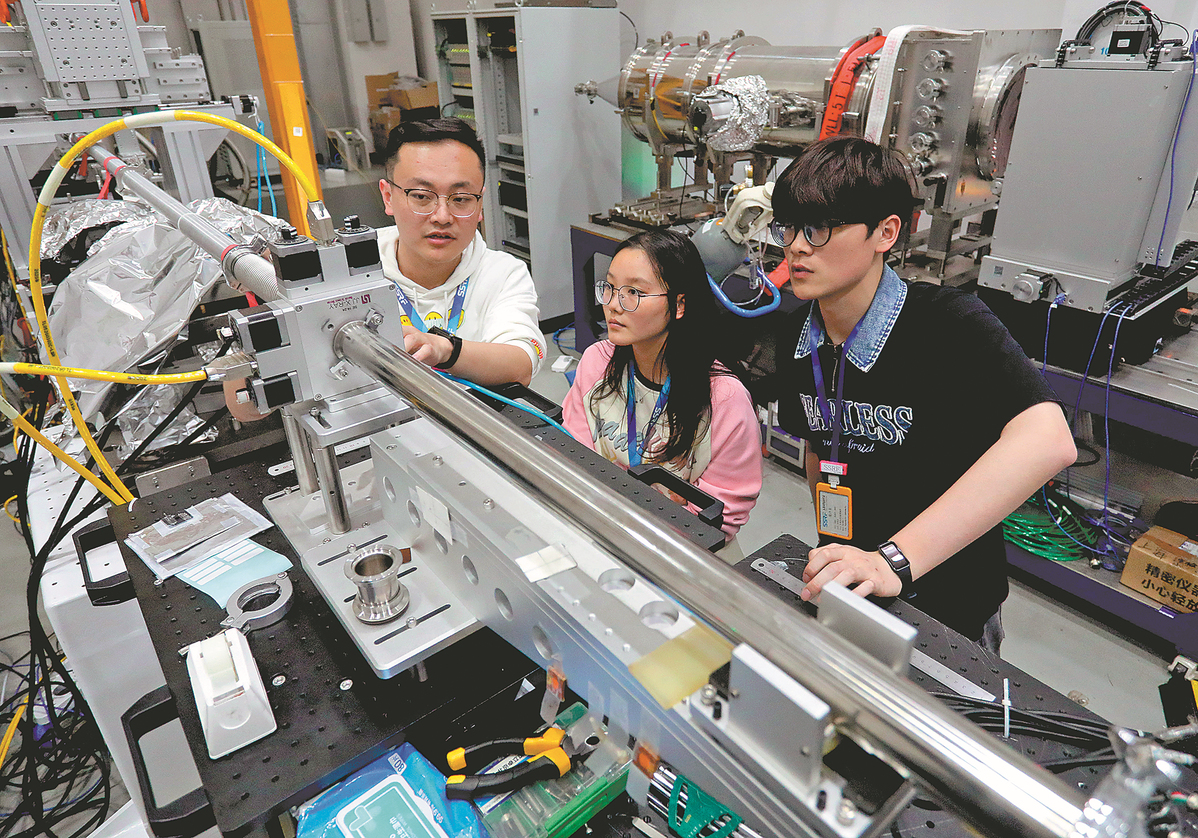
Scientists inspect the Shanghai Synchrotron Radiation Facility in Shanghai in April. (FANG ZHE/XINHUA)
This has not only made outstanding contributions to addressing key bottlenecks in national development but has also significantly promoted socioeconomic development, according to the CAS.
Leveraging these facilities, a number of nationally influential scientific and technological innovation centers and talent hubs have gradually emerged on the international stage.
The Beijing Spectrometer III International Cooperation Group, based on China's large scientific facilities such as the Beijing Spectrometer III and the Beijing Electron-Positron Collider, has attracted over 70 research institutions and more than 600 researchers from 18 countries and regions due to its leading research capabilities internationally.
The endeavor to develop large scientific facilities continues. This year, construction began on the Human Organ Physiopathology Emulation System, aiming to help scientists accurately simulate human physiological and pathological states, and analyze complex human functions and regulatory mechanisms, which is of great significance for life science research and biopharmaceutical development, according to the CAS.
Photos
Related Stories
- Sci-tech innovation fuels China's high-quality development
- Chinese scientists discover new gene that regulates lifespan
- China's scientific research papers surpass global average in citations
- China remains top source of scientific "hot papers": report
- Study indentifies 9 species of critically endangered Chinese salamander
Copyright © 2024 People's Daily Online. All Rights Reserved.







